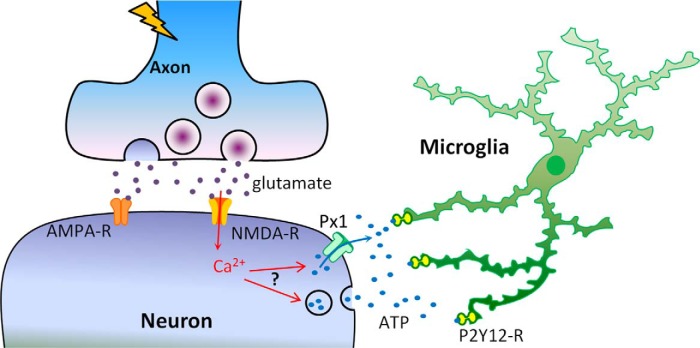Figure 9.
Schematic model for glutamate-induced microglial process extension in epilepsy. During periods of intense neuronal hyperactivity as occurs in epilepsy, neurons release glutamate from presynaptic terminals that can activate AMPA receptors (AMPA-R) and NMDA receptors (NMDA-R) on postsynaptic sites. The NMDA-R activation leads to influx of extracellular calcium and such elevations of cytosolic calcium, through currently unknown mechanisms, result in the release of ATP possibly through either ion channels like pannexin 1(Px1) or prepackaged vesicles. Released ATP diffuses into the extracellular space forming a chemotactic gradient that activates microglial P2Y12 receptors (P2Y12-R) to induce microglial process extension toward neuronal elements.

